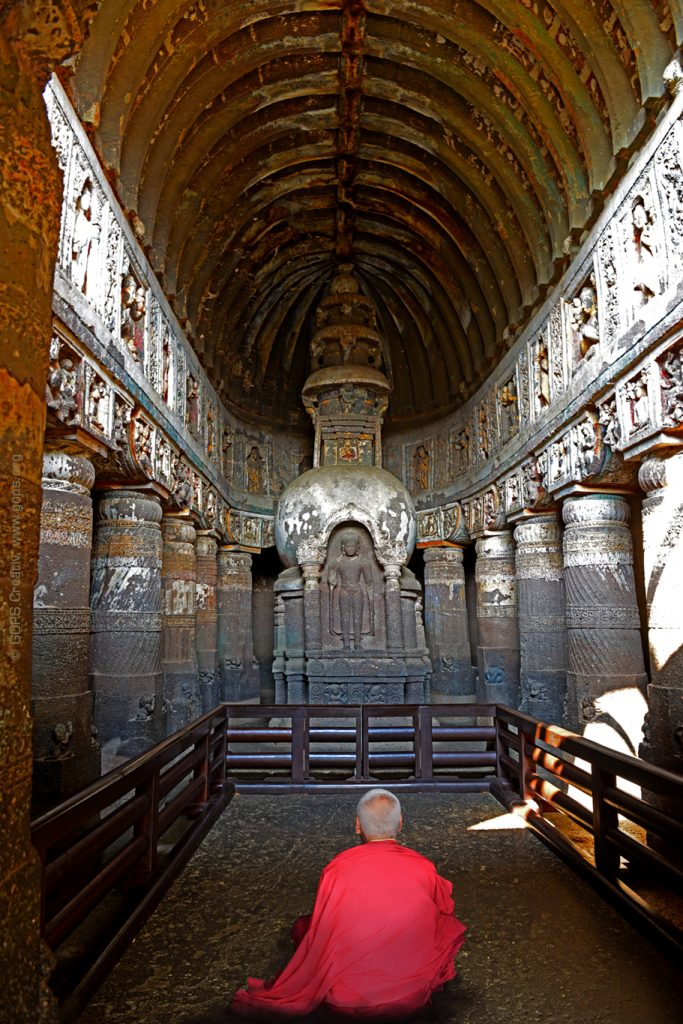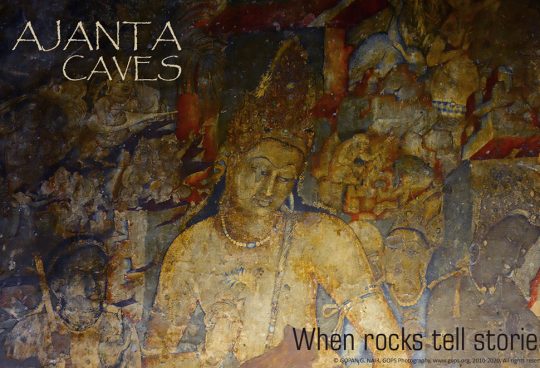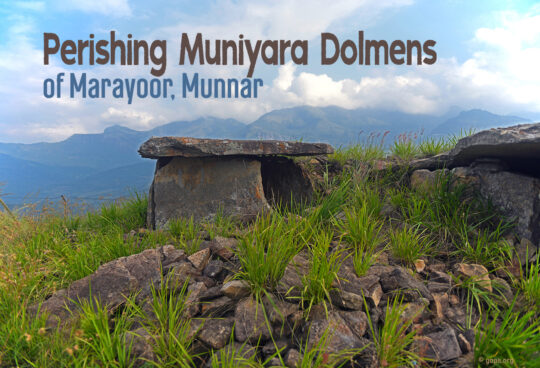Located approximately 450 kilometers away from the vibrant city of Mumbai, ‘Ajanta’ stands as a testament to the rich tapestry of ancient Indian art, architecture, culture, and religion. These magnificent cave temples showcase the seamless integration of various elements that define the splendour of India’s heritage.
Ajanta is home to a remarkable collection of 29 Buddhist monasteries and sanctuaries, representing the Theravada and Mahayana Buddhist traditions. These stunning architectural marvels date back to the period spanning from the 2nd century BC to the 6th century AD. Despite being deserted and concealed for millennia, a group of British soldiers stumbled upon this extraordinary site in 1819, bringing it back into the light after years of obscurity.
Located approximately 104 kilometers away from the vibrant city of Aurangabad in Maharashtra, the river Waghora gracefully cascades down in a series of seven steps, giving rise to a tranquil pool known as Saptakund. As it continues its journey, the river flows through a narrow, winding gorge nestled beside a striking, horse-shoe shaped rock. The caves, a testament to incredible craftsmanship and precision, are meticulously carved into the sheer vertical face of this rock. Evident from the rock’s formation and geological characteristics, it is believed that this site was shaped by an ancient volcanic eruption in the Deccan plateau.
On April 28th, 1819, a squad of soldiers from the 28th Cavalry of the Madras regiment, under the leadership of Officer John Smith, set out on a hunting expedition. While in pursuit of a tiger, they inadvertently stumbled upon Cave No.10. The sight of the cave’s entrance piqued Smith’s curiosity. With the assistance of local villagers, they cleared away the overgrowth to reveal the cave’s façade.
The collapsed stairways posed a challenge for the group to enter, requiring them to descend using ropes. Inside the caves, they used grass torches to illuminate the intricate architecture, Buddhist stupas, and wall paintings, which left Smith and his companions in awe. The news of this discovery quickly spread globally, capturing the interest of travelers worldwide. This discovery bears a striking resemblance to an Indiana Jones story, albeit with our protagonist, John Smith, committing an unfortunate act of vandalism by etching his name onto the priceless mural paintings.
King Nizam of Hyderabad sought to promote tourism in the area, but faced resistance from the local tribes, who were adamantly opposed to outsiders encroaching on their sacred land. Consequently, a trip to Ajanta was considered a daring adventure during the Victorian era.
The high number of visitors has caused extensive deterioration to the paintings and architecture. Previous preservation attempts using unscientific methods were unsuccessful. In 1846, Major Robert Gill, a British Indian Army officer, was assigned to create replicas of the Ajanta mural paintings. He dedicated nearly 20 years to painstakingly copying the paintings in the hot and eerie caves, transporting them to a museum in Britain. Despite the loss of most of his paintings in a fire in London, he continued to replicate the wall paintings for another decade until his passing in 1875.
The situation is aggravated by the fact that some conservationists applied shellac (a type of varnish) to the murals at a later stage, making it extremely difficult to remove. Various environmental factors such as climate, humidity, ultraviolet radiation, noise levels, and carbon dioxide from human breath affect the preservation of wall paintings. To protect this remarkable site for future generations, the Archaeological Survey of India and UNESCO have implemented stringent guidelines for visitors. The number of visitors allowed at a time has been limited, and the use of camera flashes and tripods is prohibited. Additionally, the caves are illuminated by small LED lamps, and visitors are required to rely on this lighting for photography.
Caves 9, 10,12,13 and 15 exhibit the influence of Hinayana Buddhism during the Satavahana dynasty. The distinct architecture with Chaitya-grihas (Buddhist stupas) placed at one end of the prayer hall serves as evidence of this influence.
It is believed that Buddha discouraged the worship of his own image, resulting in few Buddha idols being found in the temples built during the early periods. However, after Buddha’s death, the Mahayana Buddhists from the Vakataka period diverged from this tradition and began worshipping Buddha idols.
During the second phase of construction in the time of Harisena of the Vakataka dynasty, Viharas (monasteries with sanctum in the rear) were added. However, after Harisena’s rule, the entire area was abandoned and forgotten for more than 1300 years.
It is widely believed that the Buddhist monks residing in these caves were prohibited from venturing outside during the monsoon season. Instead, they dedicated their time to intricately carving and painting scenes from Jataka tales, which are stories from Buddha’s life, and other religious texts. The exquisite artworks also depict various aspects of life including kings, queens, palaces, daily activities, and adornments. Notably, two remarkable paintings, located on either side of the colossal Buddha statue in Cave-1, portray two Bodhisattvas named Padmapani and Vajrapani, also known as Avalokitesvara. These Bodhisattvas are revered not only in Sri Lanka but also in other Buddhist regions. Moreover, Avalokitesvara is worshipped as ‘Guan Yin’ in China and Japan.
The renowned 7th-century Chinese traveler, ‘Hieun Tsang’, documented that these monasteries teemed with vitality during his visit.
The artisans at Ajanta adopted a method akin to the Fresco technique of Europe. They would chip and level the rocks, apply a layer of plaster made of clay, cow dung, and rice husks, and then coat it with lime juice to achieve a smooth surface before painting. They likely used a ‘wet on dry’ technique rather than the typical ‘wet on wet’ method. The use of 6 different shades derived from natural pigments, such as red and yellow ocher, shell white, lead white, kaolin, blue lapis lazuli, and green malachite powder, was notable.
Furthermore, it’s fascinating to note that Jade crystals, Amethyst stones, and various semi-precious stones were discovered embedded in the volcanic rocks around Ajanta caves. Local handicraft shops offer souvenirs and ornaments crafted from these stones.
During our trip, we set out early to visit the beautiful Ajanta caves, which are conveniently located just 104 kilometers from Aurangabad. It took us about 2 to 3 hours to drive there. It’s important to note that Ajanta caves are closed every Monday. Our intention was to arrive at the caves before the crowds and the heat, so we got an early start. Before reaching the caves, we found a nice restaurant a few kilometers away where we enjoyed a satisfying breakfast.
Once at the caves, we had to take a shuttle bus arranged by the tourism department due to environmental restrictions. The short bus ride took us to the foothills of the caves. After getting our entry passes, we climbed the steps and followed a narrow path to the caves. The caves are numbered from 1 to 28, but not in chronological order.
After exploring Cave-16, we crossed a metallic bridge and ascended the hill to a stunning viewpoint. From there, I was able to capture a breathtaking view of the ravine with the caves in the background. On the left side of the gorge, we saw the magnificent sight of the Waghora river cascading down in 7 steps, eventually forming a pool called Saptakund.
Upon delving into the depths of various caves, some have managed to seize my awe with their remarkable elegance. My attention became ensnared by the following caves, leading me to dedicate time to thoroughly scrutinize and capture them through photography for my blog.
The first cave that captivated my interest was the renowned Royal Vihara, boasting splendid works of art adorning its walls, pillars, and ceiling. Notable within this cave are the esteemed murals of Bodhisattvas Padmapani and Vajrapani, as detailed in a previous blog post. An intact porch and a monumental Buddha statue, alongside magnificent murals embellishing the walls and ceiling, contribute to the allure of this remarkable cave.
Cave-2, is a Vihara boasting stunning carvings and murals, which are remarkably well-preserved compared to those in Cave-1. Inside, visitors will find an immense Buddha statue surrounded by intricately adorned pillars and captivating wall and ceiling murals, making it a truly breathtaking masterpiece of art.
On the other hand, Cave-4 is the largest Buddhist Vihara at Ajanta caves and comprises several prayer halls.
The Ajanta caves display a rich history of art and architecture, with each cave offering unique insights into ancient Buddhist culture and beliefs.
Cave-6 features art-work affected by soot and smoke from incense sticks and oil lamps.
Cave-8 and Cave-9 are both Hinayana viharas dating back to the 2nd to 1st century BC. The tempera paintings found in these caves were re-painted at a later time. The presence of a typical Buddhist stupa adds to the architectural significance of these caves.
Cave-10, dating back to the 2nd century BC, is the oldest among the Ajanta caves. This Sanctuary belonging to the Hinayana period consists of beautiful murals on the pillars and walls, which were re-painted in a later stage. It also contains a large Stupa still revered by devotees.
Lastly, Cave-26 boasts an enormous Reclining Buddha statue that depicts the final moments of his life. The carvings in the lower portion depict his mourning followers, while the upper portion shows rejoicing celestial beings in heaven. The hall also contains a Buddhist stupa adorned with incredibly fine carvings depicting stories from Buddha’s life.
The summer season was in full swing, and the heat was becoming more intense. We made our way back to Aurangabad before noon, eager to explore the impressive Ellora caves, a stunning example of rock-cut architecture. Read about Ellora here >>
How to Reach Ajanta:
By Air :
- Nearest Airport : Aurangabad
By Rail :
- Nearest Railway Station: Aurangabad
By Road :
- Mumbai – Aurangabad – Ajanta – 392 Km
- Aurangabad – Ajanta – 104 Km
Points to be noted :
- Monday Holiday
- Open from 9:00 am to 5:30 pm
- Entry fee :
: Rupees 10 for Indian National
: Rupees 250 foreign tourist
: Rupees 25 per camera
: Free entry for children below 15 years



































Vijay Singhania
January 08, 2020
Beautifully composed article with excellent pictures accompanying that . Well done .
GOPAN NAIR
January 25, 2020
Thank you very much Sir. Please do visit again.
Manimoy Paul
October 02, 2021
Nice Article, hope it will encourage to discover our art and culture by the people..
GOPAN NAIR
October 04, 2021
Indeed. Thanks for your comments. Have a great day.
Nitin Bidarkar
January 22, 2022
I am looking for a picture of one head and four/five bodies attached. I saw long back on the roof. Dont remember cave no. Can you please help me?
Thanks
GOPAN NAIR
January 22, 2022
Dear Sir, Could you give me a description (more specific) of the art work ?
Is it in Ajanta or Ellora ?
Painting or sculpture ?
Buddha or something else ?
I have hundreds of pictures to scan through.
Vishal
November 08, 2023
Would it be good to travel to Ajanta and ellora caves? I want to know if i have to go there
GOPAN NAIR
November 30, 2023
Why not ? It is indeed a must-go place
Aniket
July 19, 2024
hiii,
While Ajanta Caves reflect Buddhism, on the other hand, Ellora Caves represent the extraordinary blend of Buddhist, Hindu, and Jain sculptures. This also showcases the religious tolerance and harmony of ancient India. travellers should must visit the ellora also.
GOPAN NAIR
July 23, 2024
You are right. Thanks for your comments.